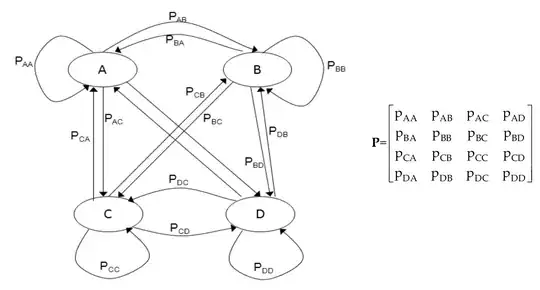The order of a Markov chain is how far back in the history the transition probability distribution is allowed to depend on.
For a first-order Markov chain, the probability distribution of the next state can only depend on the current state. So your transition matrix will be 4x4, like so:
$$\left(\begin{array}{cccc}
P(A \to A) & P(A \to C) & P(A \to T) & P(A \to G) \\
P(C \to A) & P(C \to C) & P(C \to T) & P(C \to G) \\
P(T \to A) & P(T \to C) & P(T \to T) & P(T \to G) \\
P(G \to A) & P(G \to C) & P(G \to T) & P(G \to G) \\
\end{array}\right)$$
(where $P(A \to C)$ is the probability of seeing a $C$ if you just read an $A$, etc.
Now, if you go up to order 2, the probability distribution of the next state can depend on the previous two states. So instead of just looking at $P(A \to C)$, we now need to look at $P(AA \to C), P(CA \to C), P(TA \to C), P(GA \to C)$. This will result in a $16 \times 16$ transition matrix that I don't really want to write out, but hopefully you get the idea.
As for drawing the state diagram, you can find some examples online--the basic idea is that you draw a circle for each state, an arrow between each two states with transitions, and label each arrow with the transition probability. Here's an example with four states (from here):

